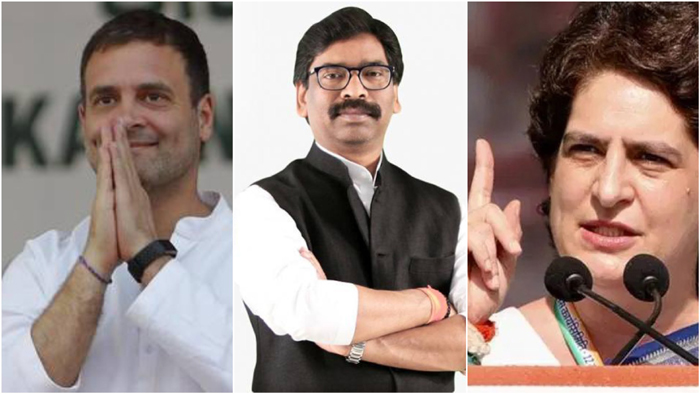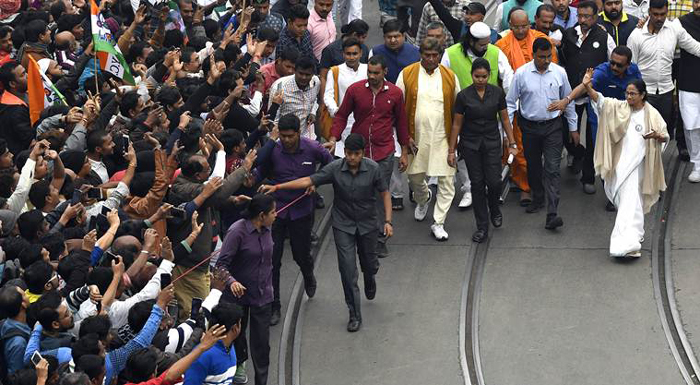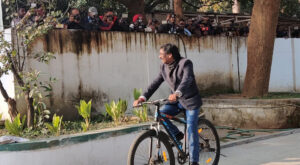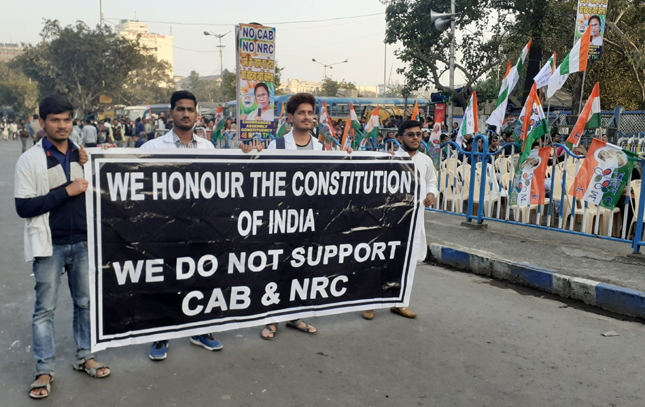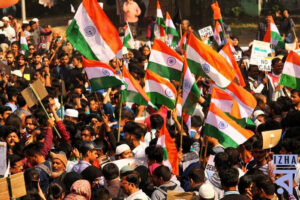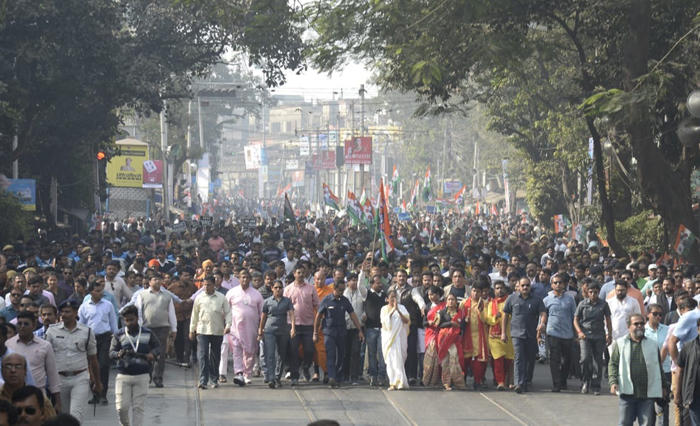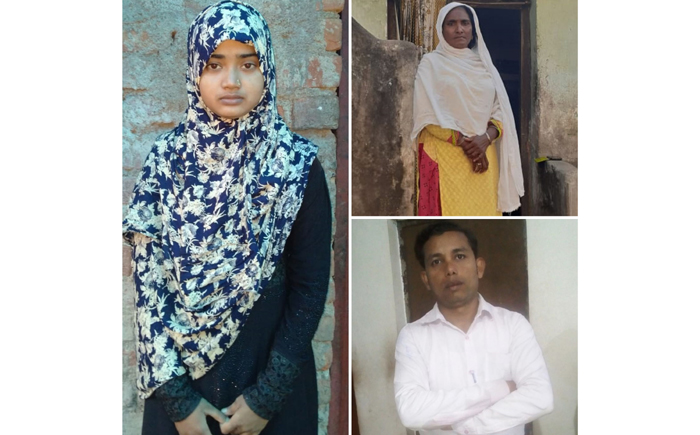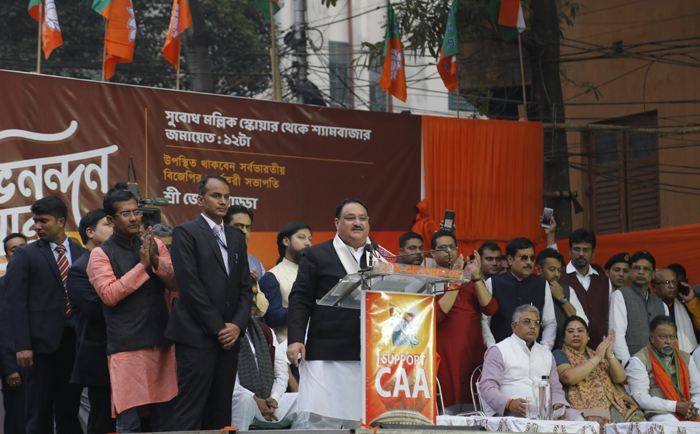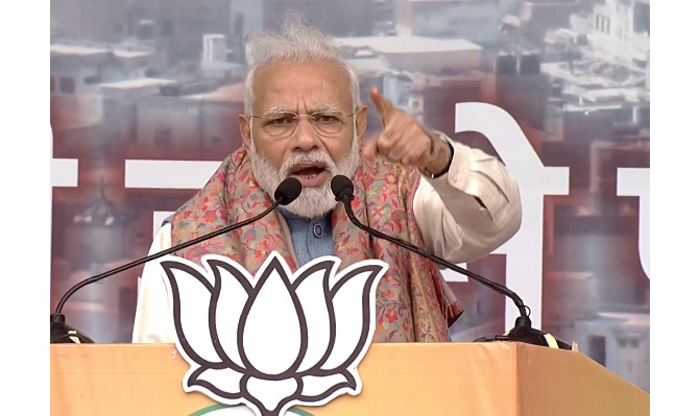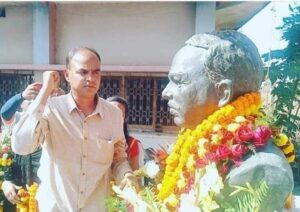Prime Minister Narendra Modi on Sunday accused the opposition parties of doublespeak on newly passed Citizenship Amendment Act (CAA) and proposed National Register of Citizens (NRC). But his address at Ramlila Maidan in Delhi made it obvious that he himself is suffering from selective amnesia. For the worse, he offered a calculated denial of responsibility on the regime’s twin project for a religion-based citizenry in hitherto secular India. Now that nationwide popular protests against the dual designs to exclude Muslims and include non-Muslims from three neighboring Islamic countries have spread in BJP-ruled states, a visibly troubled Modi denied ‘any discussion inside the government on NRC since 2014’. He tried to de-link the two by dismissing fears and speculations on the social and financial cost of NRC as ‘premature and baseless’. Further, he wanted to wash his hand from the fiasco over Assam NRC by claiming it as an obligatory move to follow SC order. In the same refrain, he denied the existence of any detention camp for the 19 lakh individuals who have been excluded from the final list of Assam NRC.
Modi’s ‘Safed Jhoot’
His off and on dementia or denial mode, a special attribute of the politicians of all hues, may help him for a while to gloss over his as well as home minister Amit Shah’s repeated assertion to link the two exercises. But proliferation of digital-age records is making it difficult for them to take advantage of short public memory.
As early as June 20, the Presidential address of Ram Nath Kovind in the Parliament, had underlined the intent of Modi.2 Ministry – to launch a nationwide NRC even as the Assam-specific exercise was yet to be over. As late as December 9, the day of CAA passage in the Parliament, Shah had thundered: Mankaar Chaliye, NRC aane wala hai. The duo made similar refrains on the exclusion of Muslim ‘infiltrators’ from Bangladesh and inclusion of persecuted Hindu and other non-Muslim ‘refugees’ during their Jharkhand election campaign, which lasted over a month. Retrieval of Parliamentary records to expose the doublespeak will not embarrass the opposition only as Shah’s junior in home ministry had informed on 27 November about the detention of 998 ‘foreigners’ in six detention camp as well as Assam government’s admission of 30 deaths of inmates including a suicide in the detention centre.
Shah’s Silence
Interestingly, Modi’s comrade-in-arms and Home Minister Amit Shah was conspicuously absent after shooting his mouth on the hyphenated nature of the CAA and NRC for months. He had said umpteen times that NRC is meant to filter out the Bangladeshi infiltrators irrespective of their faiths while CAA is designed to take in non-Muslims as legitimate refugees who had fled religious persecution in Bangladesh, Pakistan and Afghanistan. But the self-styled Chanakya is apparently rattled as his ministry is now trying to de-link the two and assuring people of hassle-free NRC.
Painting the whole opposition with the Pakistani brush has been most tested and sure-shot strategy for Modi and his echo-chamber to communalise any domestic issue and polarise people on religious line. Nothing is easy like whipping up anti-Pak Hindutva nationalism and its corollary tirade against homegrown Muslims by painting them as Pak agent provocateurs or Bangladeshi Trojan horses. Pakistani generals and politicians too had used the same weapon by triggering mass hysteria against India to deflect popular anger against them for failing to deliver on roti-kapda-makan, bijli-sadak-pani demands.
Beleaguered may be for the first time since his maiden run in 2014, Modi, however, hinted a pause on countrywide NRC but not an annulment of the project, lest it annoys Sangh and demoralize its core support base. Instead, he reiterated the differences he and Sangh makes between ‘self-asserting’ Hindu, Sikh and other non-Muslim refugees and ‘surreptitious’ infiltrators, read Muslims from the neighborhood while playing the emotive refugee card by referring to their persecution in Bangladesh, Pakistan and Afghanistan.
Obsession with Pakistan and Kashmir
He clearly signaled a counter offensive by accusing the Opposition of parroting Pakistan and conniving with the enemy to give Indian citizenship to its fifth column. Further, his shrewd allegation of the opposition’s silence on the earlier denial of right to property for Kashmiri women who had been married to mainlanders was obviously meant for rousing the majoritarian sentiments that he has exploited to the hilt for the abrogation of article 370 and the statehood of J&K.
Painting the whole opposition with the Pakistani brush has been most tested and sure-shot strategy for Modi and his echo-chamber to communalise any domestic issue and polarise people on religious line. Nothing is easy like whipping up anti-Pak Hindutva nationalism and its corollary tirade against homegrown Muslims by painting them as Pak agent provocateurs or Bangladeshi Trojan horses. Pakistani generals and politicians too had used the same weapon by triggering mass hysteria against India to deflect popular anger against them for failing to deliver on roti-kapda-makan, bijli-sadak-pani demands.
War-mongering, even a terror strike, a la Pulwama before the May Lok Sabha polls, would salvage the situation for the Regime. Current army chief and would-be first Chief of Defence Staff Vipin Rawat has suitably joined the orchestra by alerting media on increased tension on the LOC. In the meantime, an anonymously sourced story on a Pak-Jehadi plot to kill Modi has also been floated. All these are aimed at rallying the core constituency of the Hindutva project for both electoral and street battles.
The replay of Ramayana
Trying his best to don a cloak of Kalyug ke Ram, he described himself a much maligned and hounded man, almost a martyr for new India. Presenting a case for his Dharam Yudha in presidential style, he has again made BJP and bigger Sangh Parivar almost invisible behind his ubiquitous ‘I, Me and Mine’. The self-appointed saviour and avenger for historical wrongs done to the majority were frank enough about his strategy and battle cry against the new Ravana and Co – Congress and its assorted allies.
Despite his inclusive rhetoric, earlier too Modi had betrayed his hatred for Muslims when he identified the vandals by their dress during the violent protests in Bengal and elsewhere. However, historians of freedom struggle have questioned Modi and his extended Sangh Parivar on their newfound love for Mahatma Gandhi and the national flag. They reminded that the saffron camp had not only supported British power at the trying times during the freedom struggle but also refused to honor the tricolor after independence and wanted to replace it with ‘Bhagwa Jhanda’ of RSS.
He trained his guns on current Congress dynasts with ‘Gandhi surname’ and their loyals courtiers including Manmohon Singh for reneging the Partition-era pledges made to persecuted non-Muslim refugees.
What the prime minister did not divulge is the Sangh agenda to complete the religion-based Partition based on Jinnah and Savarkar’s two nation theory: exchange of minority populations in three nation-states of the subcontinent.
Bengal chief minister Mamata Banerjee drew his derision mostly. Mocking the ‘Didi’ repeatedly while pausing for the approval of cheering crowd, he referred to her doublespeak on Bangladeshi infiltrators in her opposition avatar and now in power in the state. Communists, particularly,Prakash Karat, the former CPM chief who has no love lost between him and Singh after Left withdrawal of support to UPA I government too drew his flak on the same account. But all the Modi’s detractors later pointed to their continued support to persecuted Hindu-Sikh refugees. But they refused to buy his discrimination to persecuted minority sects among Muslims in Islamic states, who may be considered as Bibhisana s in the Modified Ramayana.
More Patriotism test for Indian Muslims
Urging Indian Muslims not to succumb to disinformation and instigation of Pakistan-inspired opposition and ‘urban naxals’, Mota Bhai counted other Islamic countries among his global admirers which, he complained, caused heartburn among his homegrown and regional adversaries. Angry about the waving of the national tricolors by street protesters who have called for a second freedom struggle, Modi dismissed it as the display of false patriotism by the infiltrators. He retorted Indian Muslims obliquely on their nationalism as he asked dissenters to condemn the Pakistani terror acts in the same spirit.
Modi’s propaganda machine has already zoomed in the basic forces behind the agitations; Muslims, Left-liberal students and ‘urban Naxals’ helped by opposition parties. The continued practice of branding any dissenter as deshdrohi or anti-national has been made coterminous to Muslims and Hindus who stand by them.
Despite his inclusive rhetoric, earlier too Modi had betrayed his hatred for Muslims when he identified the vandals by their dress during the violent protests in Bengal and elsewhere. However, historians of freedom struggle have questioned Modi and his extended Sangh Parivar on their newfound love for Mahatma Gandhi and the national flag. They reminded that the saffron camp had not only supported British power at the trying times during the freedom struggle but also refused to honor the tricolor after independence and wanted to replace it with ‘Bhagwa Jhanda’ of RSS.
PM made Police victim of protester atrocities
The prime minister’s empathy for the ‘plight of policemen on their line of duties to protect the citizens and public property braving heat and cold, rain and snow’’ made his take on uniformed burtalities against Jamia Milia and AMU students as well as killings of Muslim youths in UP. His minions have already justified it to underline the ‘zero tolerance’ to violence by the main minority.
The minion’s threat to rerun Gujarat 2002
Modi’s disciple and UP chief minister Yogi Adityanath had threatened Badla against arajak and upadrapi or lawless and trouble-makers who had destroyed state and private property. Gunning down at least 16 persons in the state, mostly Muslims (though police claimed no firing), and merciless beating of the community students and youth underlined the state-sponsored hatred, not new in the state’s uniformed forces since decades. Most chilling reminder of the Hindutva mindset came from Karnataka BJP minister. He threatened to re-run Gujarat 2002 by referring to the carnage of Muslims after Kar Sevaks were killed in a torched train compartment in Muslim-dominated Godhra.
Modi’s propaganda machine has already zoomed in the basic forces behind the agitations; Muslims, Left-liberal students and ‘urban Naxals’ helped by opposition parties. The continued practice of branding any dissenter as deshdrohi or anti-national has been made coterminous to Muslims and Hindus who stand by them.
Clearly, he has drawn battle lines for a civil warlike situation. Yes, Modi hai to Mumkin hai!


